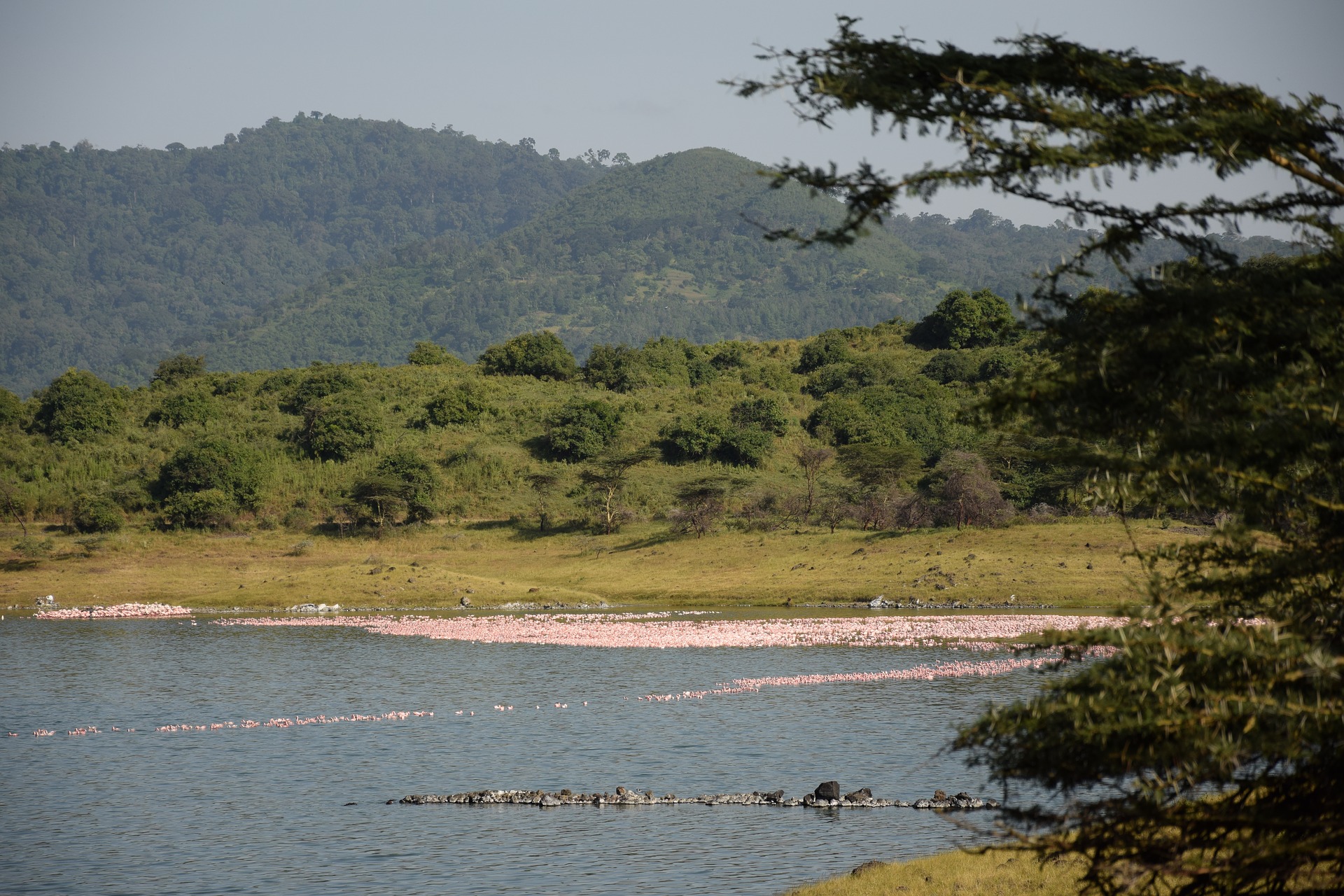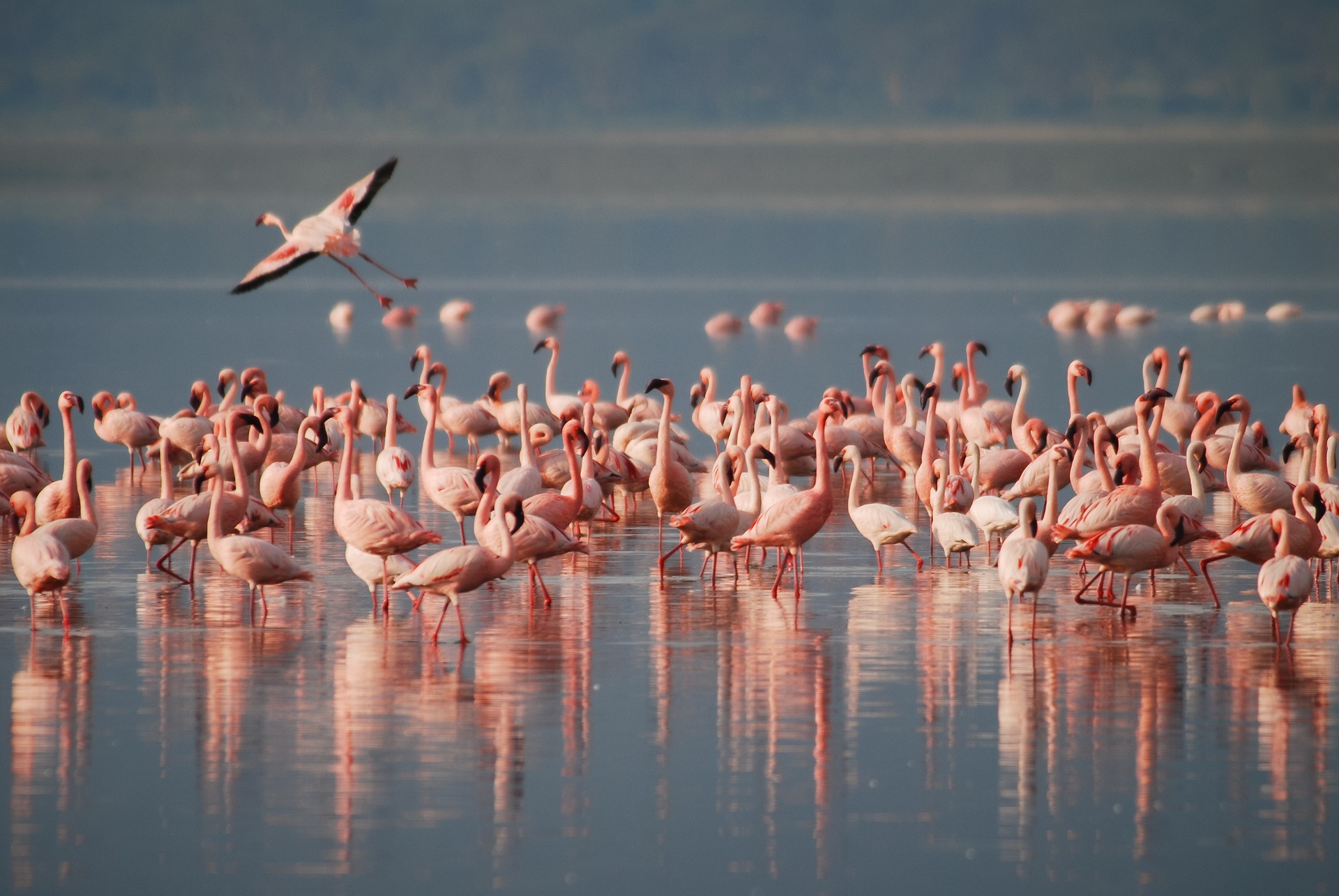The Great Rift Valley is one of the earth’s greatest physical features. It spans vast lengths and goes through several countries, from southwest Asia to East Africa. In it, there are lakes, hot springs, rivers, and mountains. One of the most notable lakes in this area is Lake Natron, in East Africa. This lake has several striking features from its composition, formation and the conditions which give it a red-like color and make it almost entirely inhospitable to several life forms. It is even stated to turn animals to stone, yikes! Despite this lifeless connotation, the lake supports one of Africa’s most beautiful birds, the lesser flamingo, which relies a lot on the lake as a breeding ground.
Where to find Lake Natron

Lake Natron is a boundary lake and lies at the border of Kenya and Tanzania, in the northern part of the latter. The lake is close to one of Tanzania’s larger towns, Arusha. Lake Natron is also bordered by other tourist destinations such as the Ngorongoro Crater Highlands to the south, the famous Serengeti Plains that lie to the west, and a volcanic mountain, Ol Doinyo Lengai. Lake Natron is accessible from Tanzania but can also be accessed through Shompole Wilderness in Kenya, which in itself is a lovely site to visit. Another interesting fact about Lake Natron’s location is that it sits at the lowest point of the rift valley, which is 600 metres above sea level.
Size and Depth of the Lake
Lake Natron measures 56 km (35 miles) long and 24 km (15 miles) wide. It is not a very deep lake and only reaches depths of three meters (9.8 feet), which is very shallow compared to other lakes in the Eastern Rift Valley, such as Lake Tanganyika, estimated to be about five hundred and seventy meters (1,890 feet) deep.
Why is Lake Natron red?

The crimson color of Lake Natron is not the stuff of nightmares but is actually quite scientifically explainable. Lake Natron is a closed lake, meaning that even though they are fed by water from various sources, the water that drains into the lake does not drain out. The only way water leaves closed lakes is by evaporation. It is because of the evaporation that the lake gets its characteristic crimson color. Lake Natron is fed by the Southern Ewaso Nyiro River and by mineral-rich hot springs. In the dry seasons, as the water evaporates, sodium carbonate decahydrate and sodium sesquicarbonate (trona) are left behind. This causes the salinity levels to increase, and salt-loving microorganisms such as cyanobacteria begin to thrive. Cyanobacteria use photosynthesis to make their food like green plants do, but their photosynthesizing pigment is not green. Instead, it is red. This is what gives the deep red color of the open waters and the orange color of the shallow parts of the lake. The salt crust on the lake’s surface at times is crimson-colored because of the same salt-loving organisms.
Is it really lifeless?
For evaporation to occur, very high temperatures are required. The lake’s temperatures can be said to reach up to 60 degrees Celsius (140 degrees Fahrenheit)! Aside from the temperatures, the pH levels of the lake can reach 10, which is very alkaline. These high temperatures, coupled with very variable salt content, the lake does not support much wildlife. A recent book by photographer Nick Brandt, titled “Across the Ravaged Land” may depict Lake Natron as a toxic place where things go to die, and nothing lives there. The book shows pictures of the remains of flamingos and other animals that have been calcified. The animals’ remains had chalky sodium carbonate deposited surrounding their bodies. However, these might just be the unlucky animals that might have fallen victim to some of the harsh conditions of the lake. The lake is not truly lifeless as it supports a variety of organisms. These include fish such as the white-lipped or alkaline tilapia (Oreochromia alcalicus) that live on the edges of the hot spring inlets, some species of algae, and most notably the lesser flamingo (Phoeniconaias minor) for which it provides one of the largest breeding grounds on the continent.
Why is Lake Natron important?

Lake Natron is important for several reasons despite its unfavorable conditions. For starters, it provides a large breeding ground for the lesser flamingo. The flamingos build their nests using the soda flats that occur between August and October. The lake’s salinity also provides food for the birds as they feed on Spirulina, blue-green algae with red pigments found in the lake. (Hint: this is what gives the lesser flamingo their pinkish hue). These species of flamingo have been designated a near-threatened conservation status. The lake’s location also acts as a defense from the bird’s predators because of the caustic environment. For this reason, the lake and the surrounding area are accorded international conservation to preserve the lesser flamingo species.
The area around the lake is classified as a Ramsar Site wetland of international significance and is central to the Maasai community’s semi-nomadic pastoral way of life.
The lake, as well as the area around the lake, are important too because they generate income from tourism when people visit to see the spectacle that is the blood lake.
Where to stay if you want to visit Lake Natron
So where would you stay if you were to visit Lake Natron? It might not be possible to live on the shore of freshwater lakes, but there are a few places to stay while visiting Lake Natron. One such place is Moivaro Lake Natron Tented Camp, and another is Ngare Sero Lake Natron Camp. Both of these are in proximity to the lake and offer amazing views of the lake and the surrounding volcanic landscape.
Lake Natron is truly a marvelous sight to behold and is just one of the testaments of nature’s incredible capabilities. If one can visit the lake and its surrounding area will get a treat of seeing the lesser flamingo spring new life as well as other animals that venture near but not too close to the lake.
































